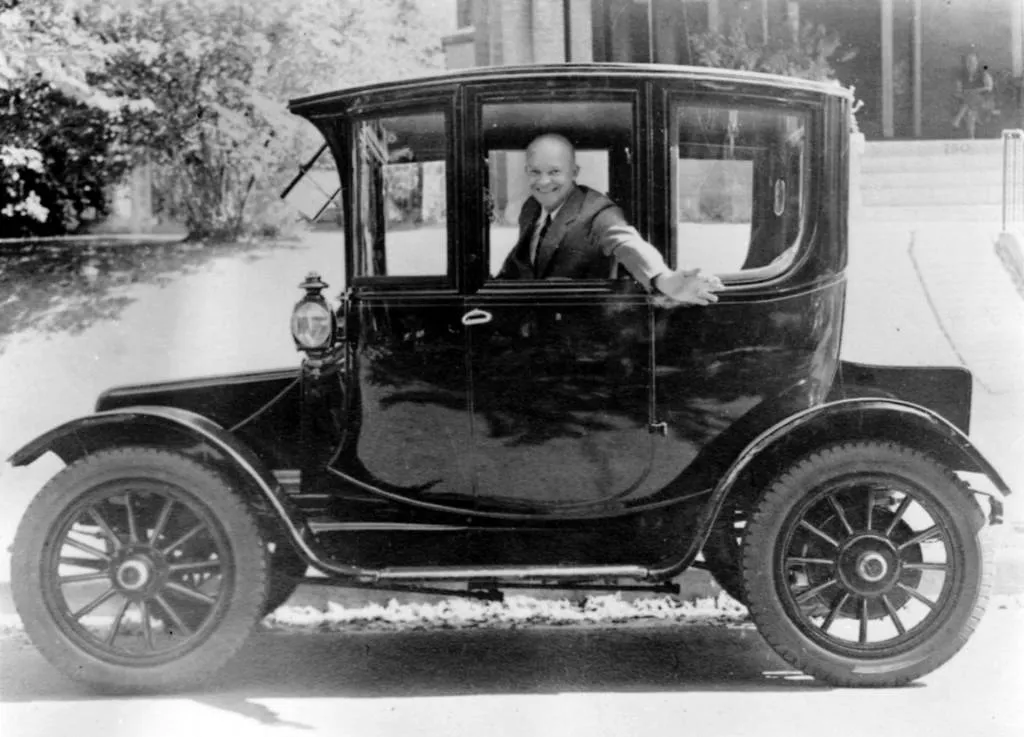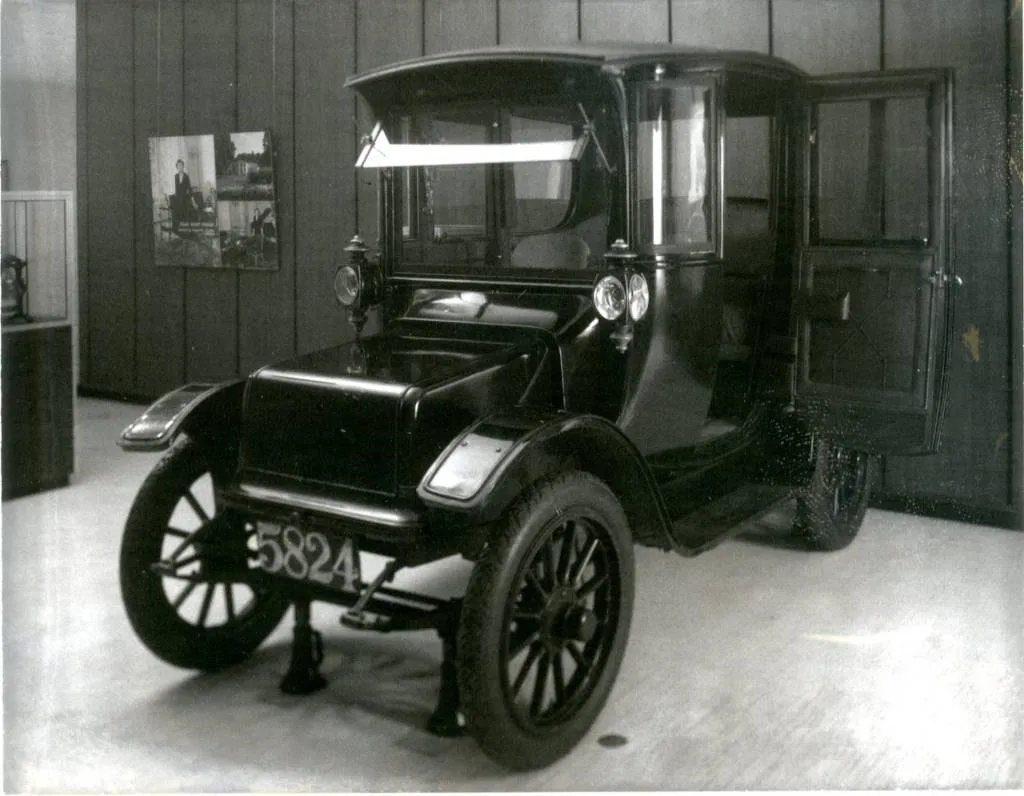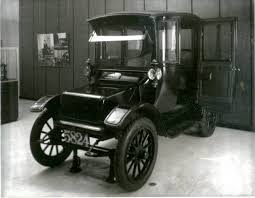At least a couple of U.S. presidents have driven electric cars, but not all are recent examples.
President Dwight D. Eisenhower, our 34th President, may have been one of the earliest. Before becoming a renowned general, Eisenhower drove a 1914 Rauch & Lang electric car that belonged to his in-laws.
John Sheldon and Elvira Doud, Eisenhower’s father- and mother-in-law, owned the car, which was advertised as the first EV in America with a top-mounted worm drive. It could be driven from the front or back seat, and had a top speed of 13 mph, with a range of up to 100 miles.
Eisenhower met their daughter Mamie in 1915, and they married on July 1, 1916. Ike drove the car often until it was donated to his museum in 1953.
The Douds, a wealthy couple from Colorado, purchased the car for $4,300 in 1914, equivalent to over $135,000 today. This is far more than the cost of a 2024 Mercedes-Benz EQS 580 sedan.
 1914 Rauch & Lang electric car and President Dwight Eisenhower
1914 Rauch & Lang electric car and President Dwight Eisenhower
The Eisenhowers occasionally drove the car but later bought a used black Pullman roadster before moving to Washington, D.C. The automaker, which went out of business in 1917, barely outlived the electric car, which frequently broke down.
For the next few decades, the Eisenhowers drove gas-powered cars. Mamie often drove in D.C., navigating bustling lanes filled with streetcars and Model Ts. “When I would sometimes take Ike to the office in the morning,” she recalled in an oral history, “you’d run into what we called then a great traffic problem, which is nothing in comparison to today.”
The Eisenhowers owned several Chryslers, including a 1948 Chrysler Crown Imperial, a 1950 model, and a 1952 model. While Eisenhower was President (1953-1961), they used White House Motor Pool vehicles, mostly Chryslers, although Eisenhower also drove Cadillacs and was driven in a 1950 “Bubbletop” Lincoln in many parades.
During his presidency, Eisenhower’s grandchildren also drove an electric car—a miniature one they used in the White House hallways.
Upon retiring, the Eisenhowers purchased two Chryslers from the White House fleet, along with various farm vehicles for their farm near Gettysburg, Pennsylvania.
 1914 Rauch-Lang electric car
1914 Rauch-Lang electric car
Eisenhower’s “Death Knell” for Short-Range EVs?
Eisenhower’s administrations preceded the modern electric car by decades, but his presidency had long-term effects on today’s EV market. In 1954, after proposing the interstate highway system in his State of the Union address, he advocated for a gas tax to fund highway construction. In 1956, Eisenhower signed the Federal-Aid Highway Act, initiating a $50 billion project to expand the U.S. highway network.
Eisenhower christened the modern Interstate highway system. While this expansive network facilitated long-distance travel, it may have hindered the development of infrastructure for short-range EVs. The rise of gas stations overshadowed the potential for electric vehicle infrastructure.
Eisenhower died in 1969, before his vice president, Richard Nixon, founded the Environmental Protection Agency (EPA). Mamie died in 1972. It wasn’t until the presidency of George W. Bush that electric vehicles gained significant national attention and funding.
Ike’s legacy toward efficient transportation remains complex. In his era, a President could be both pro-American and an EV driver. Photos courtesy of the Eisenhower Presidential Library.
Original Story at www.greencarreports.com
